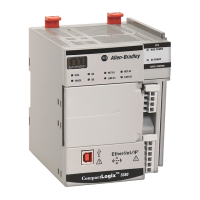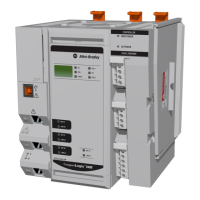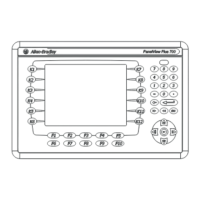Multi-Axis Coordinated Motion Instructions
426 Rockwell Automation Publication MOTION-RM002H-EN-P-February 2018
Important Consideration
If you program tangent circles with different Jerk rates (Decel Jerk of first circle
and Accel Jerk of the second circle), then you might get a slight velocity
discontinuity at the intersection of the two circles. The size of the discontinuity
depends on magnitude of the Jerk difference. In other words, the smaller the Jerk
difference, the smaller the velocity glitch. Therefore, we recommend that you do
not program Jerk rates on tangent circles.
Termination Type
For Master Driven Speed Control (MDSC), when all sequential instructions run
in the same mode (Master Driven Mode or Time Driven Mode), then all
termination types are supported. If the termination type switches in the
coordinated motion queue, errors may generate depending on the sequence of
motion types.
The following is only applicable if a move on a slave Coordinate System uses a
Blending Termination Type (Termination Types 2, 3, or 6) and is programmed in
MDSC mode.
If you use the Calculated Data returned in the last MCCM instruction of a
motion sequence to program the length that the master axis has to move for the
motion sequence to go PC, then there is the possibility that you will have to add a
small safety margin to the Calculated Data. If you do not add this margin, there is
a chance that the motion of the master axes completes before the entire motion
sequence programmed on the Slave Coordinate System finishes. If this occurs, the
last motion instruction on the Slave Coordinate System remains active and does
not go PC. The value of the small safety margin is dependent on the Command
Tolerance used for the first and last move in the motion sequence as follows:
CUP = Coarse Update Period
MAS = Master Axis Speed
• If a Command Tolerance value of 100% is used for the first move in the
sequence then:
SafetyMargin1 = CUP * MAS
else
SafetyMargin1 = CUP * MAS * .02
• For all other moves in the blending sequence between first and last:
SafetyMargin2 = CUP * MAS * .02 * number of blending moves between 1st and
last

